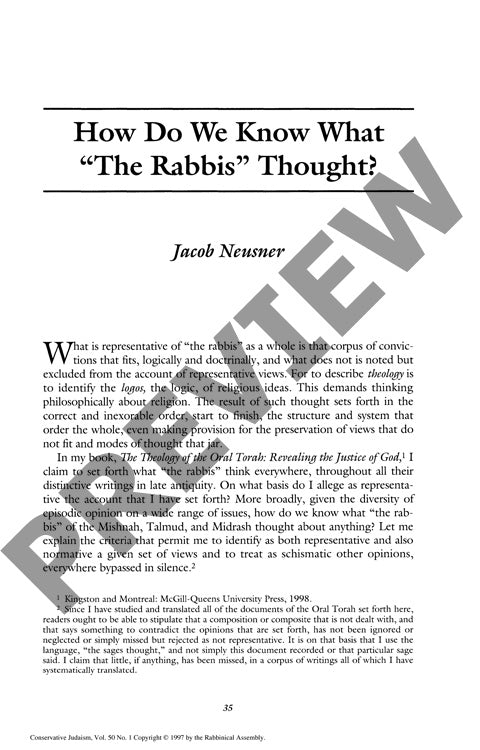How Do We Know What the Rabbis Thought
Couldn't load pickup availability
Determining what ancient rabbis truly believed poses a central challenge in Jewish studies - how can we speak of unified "rabbinic thought" when faced with a sea of diverse, often conflicting opinions across the Mishnah, Talmud, and Midrash? Rather than simply counting occurrences of particular views, a systematic analysis reveals that representative rabbinic theology emerges through positions maintaining logical consistency and doctrinal harmony throughout these texts. Four key criteria establish theological normativity: anonymous or unchallenged statements, coherence with related positions, premises enabling logical connections, and presentation as authoritative within their contexts. This methodological framework demonstrates that "representative" rabbinic thought stems not from numerical dominance, but from convictions embodying consistent rational modes of thought that generate logically consequent propositions. Such analysis enables reconstruction of a coherent theological system the rabbis would have collectively endorsed, despite lacking formal ecumenical councils like those in early Christianity. The approach transcends simple quantitative methods to identify the governing logic and structural coherence underlying the entire corpus of rabbinic literature in late antiquity.

More Information
-
Physical Description
-
Publication Information
Published 1997
ISBN
-
Publication Credits
Jacob Neusner

